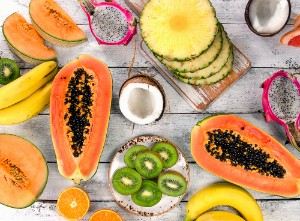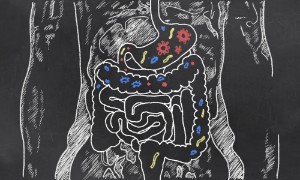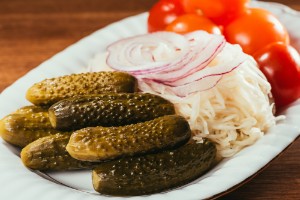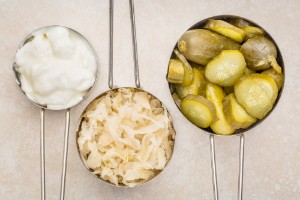Soluble and Insoluble Fiber – the most complete review
Dietary fibers (fiber) are components of plant foods, which, in most cases, reach the lower parts of the digestive system in unchanged form and are food for beneficial bacteria.
There are two main types of fiber: soluble and insoluble.
Eating enough fiber of both types improves digestion, promotes weight loss and has other extremely beneficial effects.
Content
What is fiber and its main types
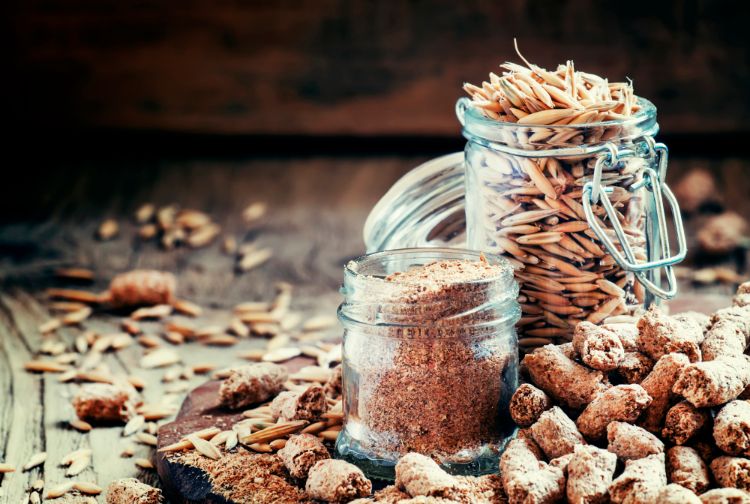
Dietary fiber (fiber) is a coarse type of food that is practically not digested in the lumen of the digestive tube and is excreted unchanged from the body.
A person cannot extract energy value, vitamins, minerals and other nutrients from fiber, but it is necessary for the adequate and well-coordinated work of the gastrointestinal tract of both adults and children.
There are two main types of fiber:
- Soluble. Soluble fiber mixes quickly with the liquid in the intestinal lumen and increases in volume 4-10 times, resembling a soft gel in appearance. These expanded dietary fibers are prebiotics &8212; food for beneficial microorganisms in the intestine ( Probiotics ). They also quickly cause a feeling of satiety and saturation of the body. Soluble fibers have a positive effect on lipid and fat metabolism, prevent the development of diabetes mellitus, atherosclerosis and reduce the risk of death from cardiovascular diseases. If there is an excess, there may be a delay in the evacuation of feces (it is the main cause of constipation with a monotonous diet).
- Insoluble. Once in the intestine, this type of fiber does not dissolve in it, because it does not interact with water and other substrates. Such fiber accelerates progress and speed fermentation food particles, helps to quickly remove feces and prevent constipation, promotes the discharge of gases from the digestive tube.
Both types of fiber provide a favorable environment for the growth and development of beneficial microorganisms, inhibit the vital activity of pathogenic and opportunistic representatives of the microflora.
7 useful properties
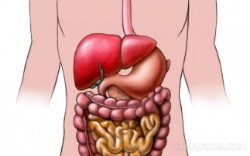 Dietary fiber has a lot of beneficial properties for the body and should be included in the diet of every person.
Dietary fiber has a lot of beneficial properties for the body and should be included in the diet of every person.
The main advantages of soluble fibers are:
- Weight reduction. According to research data , soluble dietary fibers block the absorption of fats from the intestinal lumen, interfere with the metabolism of lipids in the body. As a result, the formation of fat depots is prevented. Thus, they can be used for weight loss.
- Normalization of digestive processes. Soluble fiber serves as an important food source for beneficial microorganisms, which are necessary for the adequate course of enzymatic digestion of food and the smooth muscles of the gastrointestinal tract.
- Normalization of cholesterol levels. Modern research has proven that soluble fiber reduces the absorption of a number of fatty acids secreted into the lumen of the digestive tube along with bile. This leads to an increase in the content of high-density lipoproteins (good cholesterol) and a decrease in low molecular weight lipids (bad cholesterol). Similar effects purify the vessels and prevent the formation of atherosclerotic plaques in the walls of blood vessels.
- Decrease in blood glucose. According to scientists , soluble fiber reduces the absorption of all carbohydrates (including glucose), and also increases the sensitivity of insulin receptors in muscle and adipose tissue cells. Thus, glucose begins to be better absorbed by the body's cells and enters in smaller volumes. A decrease in the incidence of type II diabetes mellitus was noted in populations whose diet is rich in soluble fiber.
- Prevention of cardiovascular diseases. Fiber reduces cholesterol levels, reduces body weight and blood glucose concentration. Such a complex effect on all components of the metabolic syndrome prevents pathologies such as coronary heart disease and myocardial infarction, stroke, thrombophlebitis of the veins of the lower extremities.
The positive qualities of insoluble fibers include:
- Prevention of constipation. Insoluble fiber accelerates the work of smooth muscles enclosed in the walls of the digestive tube, and also increases the rate of evacuation of feces.
- Reducing the risk of diverticular formation and preventing diverticular disease. As you know, diverticula are formed in weak places of the intestinal wall – the area of entry and exit of blood vessels. An adequate course of digestive processes (reducing the time spent by food particles in the intestine and inhibiting gas formation) against the background of fiber consumption provides reliable prevention of this serious complication.
Both types of fiber increase the feeling of satiety after eating and reduce appetite, which has a beneficial effect on body weight.
Daily rate
Everyone should get enough fiber daily. The following are the consumption rates for each gender:
| Gender | Men | Women | ||
| Age | Up to 50 years old | Over 50 years old | Up to 50 years old | Over 50 years old |
| Daily requirement (in grams) | 38 | 30 | 25 | 21 |
It is recommended to get fiber from various types of food, rather than loading the body with monotonous food.
The most important sources are legumes and cereals, fruits and vegetables. For example, 1 piece of bread made on the basis of whole wheat contains 3 g of fiber, 200 g of oatmeal porridge – 4 g, 200 g of boiled dark beans – 15 g.
If it is impossible to compensate for the body's needs with habitual food, it is necessary to include specialized biologically active food additives or medications. Before treatment, you need to consult a doctor.
Sources of soluble fibers
 The main sources of soluble fiber are:
The main sources of soluble fiber are:
- Citrus fruits;
- Apples;
- Earthen pear;
- Vegetables (carrots, pumpkin, eggplant);
- Legumes (soybeans, beans, lentils);
- Grain plants (oats, wheat, barley, buckwheat);
- Nuts (almonds).
In order to increase the content of soluble fiber in the daily diet, it is recommended:
- To prepare rich broths based on carrots, peas and other legumes;
- Replace standard snacks with apples or oranges;
- Use dried fruits instead of sweets and desserts.
Sources of insoluble fibers
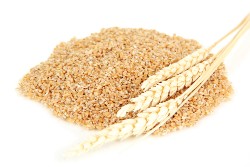 The most valuable sources of insoluble fiber:
The most valuable sources of insoluble fiber:
- Whole grain flour;
- Wheat bran;
- All kinds of nuts and seeds;
- Vegetables (cabbage, zucchini, spinach, potatoes, tomatoes);
- Legumes (beans);
- Fruits (avocado, green bananas, kiwi, mango)
Recommendations for increasing the percentage in the diet:
- Prepare bakery products exclusively from whole grain flour;
- Eat nuts more often;
- Buy only fresh fruits and vegetables (ideally– "from the garden").
What is the danger of excess?
 Excess fiber entering the body can lead to a number of dyspeptic disorders (increased gas formation, spastic pain in the lower abdomen).
Excess fiber entering the body can lead to a number of dyspeptic disorders (increased gas formation, spastic pain in the lower abdomen).
The symptom complex is caused by activation of enzymatic processes and retention of food particles in the lumen of the digestive tube.
What other types are there?
Fibers are classified not only into soluble and not.
From the point of view of science, several approaches to the systematics of dietary fiber can be distinguished (with the exception of the criterion of solubility in water). The main types are:
- Lignin. It is a substance contained in the stiffened cells of plants.
- Non-starch polysaccharides. This group includes cellulose and non-cellulose polysaccharides: hemicellulose (hemicellulose, pectin, gum, mucus).
Depending on the chemical structure, the following are isolated:
- Fibers that do not contain carbohydrates (lignin);
- Polysaccharides (pectin, hemicellulose, etc.).
Depending on the nature of the source:
- Traditional fibers (cereals and legumes, vegetables and root crops, fruits and berries, mushrooms, nuts, marine plants);
- Non-traditional fibers (stems of cereals and grasses, coniferous and deciduous wood).
According to the degree of fermentation (microflora of the digestive tract):
- With a high degree of fermentation (pectins, hemicellulose, mucus);
- Partially fermentable (cellulose);
- Non-fermentable (lignin).
Let's focus on certain types of dietary fibers that have a significant effect on the human body.
1. Fermentable fibers
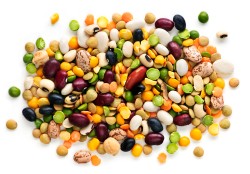 There are about 100,000,000,000,000 microorganisms living in the gastric tract of each person, most of them are in the large intestine. Fermentable fibers, according to Canadian scientists
, they reach the end sections of the digestive tube in an almost unchanged form and serve as "food" for beneficial representatives of the microflora.
There are about 100,000,000,000,000 microorganisms living in the gastric tract of each person, most of them are in the large intestine. Fermentable fibers, according to Canadian scientists
, they reach the end sections of the digestive tube in an almost unchanged form and serve as "food" for beneficial representatives of the microflora.
Noble bacteria ferment it, increase the activity of their vital activity, which leads to a decrease in the number of pathogenic and opportunistic forms. Fermentable fibers include: guar gum, inulin, beta-glucans, pectins.
Beneficial bacterial agents have a complex effect on the human body. For example , they are able to synthesize individual substances (butyrate, propionate, acetate), which reduce the risk of developing diseases from the digestive and cardiovascular systems, and provide cancer prevention.
Maintaining normal microflora, according to rodent experiments , reduces the body's susceptibility to stress loads and to depression , helps prevent irritable bowel syndrome and other infectious and inflammatory lesions of the digestive tube.
Italian experts claim It is shown that the growth of noble microorganisms, supported by constant consumption of fermented fibers, has a beneficial effect on body weight, prevents the appearance and progression of obesity.
The most important source of fermentable fibers is legumes. 200 g of plants provide half of the daily fiber requirement.
2. Viscous fibers
 Individual representatives of soluble fibers, mixing with water, form an extremely thick jelly-like mass, which significantly slows down the rate of gastric emptying and the subsequent movement of food particles through the digestive tract.
Individual representatives of soluble fibers, mixing with water, form an extremely thick jelly-like mass, which significantly slows down the rate of gastric emptying and the subsequent movement of food particles through the digestive tract.
One of the American reviews showed that viscous fibers, due to their biological properties, contribute to the rapid onset of a feeling of satiety, lead to a decrease in cravings for food and loss of body weight. The additional inclusion of this type of fiber is effective in preventing and treating obesity.
Increasing the "viscosity" of feces contribute reducing the reabsorption of fatty acids used for the synthesis of atherogenic cholesterol, reduces the concentration of glucose in the blood.
The most effective types are pectins, bega-glucans and guar gum.
Natural springs - these are legumes, asparagus, oats, flax seeds, Brussels sprouts.
3. Resistant starch
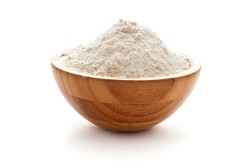 Resistant starch is a complex of long chains consisting of glucose. It is the main type of carbohydrates in the diet of every person.
Resistant starch is a complex of long chains consisting of glucose. It is the main type of carbohydrates in the diet of every person.
Stable starch in unchanged form passes through all parts of the intestine and serves as a source of valuable nutrients for beneficial representatives of the microbiocenosis of the large intestine.
According to American research, the product causes a rapid feeling of satiety, helps to reduce overall food intake.
Individual works of scientists show that this type of starch increases the sensitivity of insulin receptors on fat and muscle tissue cells. As a result, the product normalizes the metabolism of insulin and glucose in the body, provides prevention of type II diabetes mellitus and other pathologies of the glycemic profile.
Potatoes are the leader in the content of this type of fiber. Green bananas, legumes, and oats are also rich in resistant starch.
Other types
The following types of fibers are also important for the adequate course of digestive processes:
- Fructans. are chains of fructose molecules. They are a source of food for friendly microflora, and are used to treat a number of dyspeptic disorders (flatulence, diarrhea). The main source is wheat.
- Beta-glucans. Have many useful properties: they reduce the concentration of glucose in blood plasma, normalize the lipid profile, and promote rapid saturation of the body. The main natural sources are oats and barley.
- Glucomannan. It is a biologically active food additive. It is obtained during the processing of the roots of the konjak plant. According to Norwegian researchers , causes a significant decrease in body weight. It also normalizes the course of digestive processes, reduces the risk of mortality from cardiovascular diseases.
Conclusion
Thus, soluble and insoluble fibers, as well as other types of fiber, are extremely important for the smooth functioning of the digestive system. They ensure the maintenance of the vital activity of beneficial microorganisms in the lower gastrointestinal tract, activate smooth muscles, and prevent constipation.
Dietary fiber also helps to reduce body weight, normalize lipid and glucose metabolism, and reduce the risk of mortality from heart diseases.
